This past April when I headed to Tennessee and North Carolina to photograph wildflowers, one of the flowers I really hoped to photograph was the Yellow Lady’s Slippers. I’d seen and photographed the pink variety in the past – but had never seen – much less photographed the yellow ones. One of the challenges to finding the yellow lady’s slippers is that when people know where they are located in the wild, they are often reluctant to share the information. Too many of the rarer wildflowers such as the yellow lady’s slippers are being dug up and stolen from public lands. So while I fully understand people’s reluctance to share exact information about locations – it can be a bit frustrating.
I saw my first Yellow Lady’s Slippers in a private garden in Gatlinburg. A local woman stopped by my booth at the Spring Wildflower Pilgrimage – asked if I had photos of the yellow lady’s slippers – and I said I didn’t. We talked for a while – and then she invited me to visit her home after the show – where she had some growing her in garden. Needless to say I was thrilled – and I quickly accepted her invitation.
Later in the trip, I had the opportunity to photograph several more Yellow Lady’s Slippers at the Asheville Botanical Gardens.
(c) 2010 Patty Hankins
Yellow Lady’s Slippers (Cypripedium parviflorum) are members of the orchid family. There are several types of native Yellow Lady’s Slippers in the US – only California, Nevada, Oregon, Oklahoma, Louisiana, Hawaii and Florida do not any native Yellow Lady’s Slippers. Despite their wide range, they are threatened or endangered in many states.
Yellow Lady’s Slippers grow to about 2 1/2 feet tall. They usually have 2 or 3 leaves on alternate sides of the stem and one or two flowers at the top. Like other orchids, the Yellow Lady’s Slippers have 3 petals – the top two are fused together – while the third forms the open pouch or slipper.
Yellow Lady’s Slippers grow best in woodlands and forests with moist soil. They tend to bloom for about three weeks in late spring through early summer. When you find a cluster of Yellow Lady’s Slippers, most likely many in the group are daughter plants to one mother plant that spread it’s seeds.
There are a few recorded medicinal uses for Yellow Lady’s Slippers. Cherokee Indians created a drink from the roots to treat worms. Other traditional uses include use as an anti-depressant and anti-spasmodic. As with all information about medicinal uses for native plants – the information is presented for information purposes only and should not be considered a recommendation for medicinal use.
I was absolutely thrilled to have a chance to see and photograph the Yellow Lady’s Slippers in a private garden and in a botanical garden – now I just need to find some to photograph in the wild. There’s always next year . . .
And if you do see them growing in the wild – please enjoy seeing and photographing them – but don’t dig them up and take them home.
If you’d like more information about the Yellow Lady’s Slippers, there is information online at
Lady Bird Johnson Wildflower Center
University of New Hampshire Extension Service
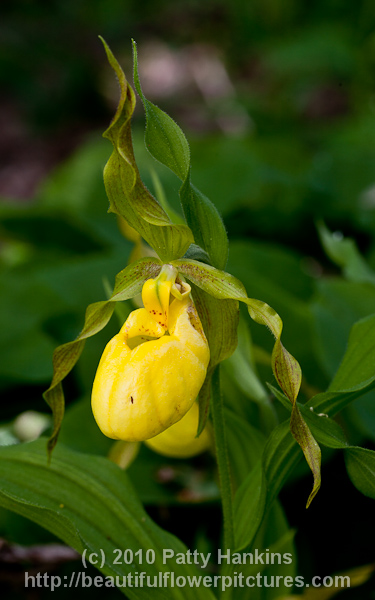
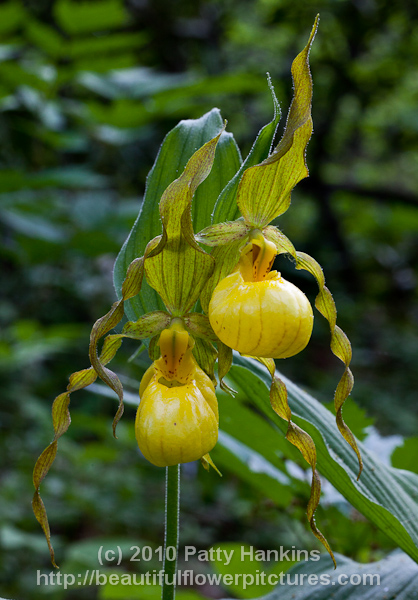

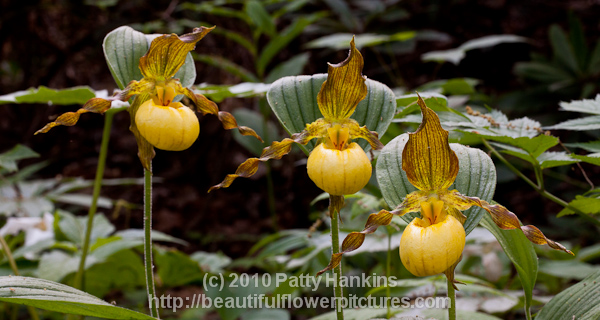
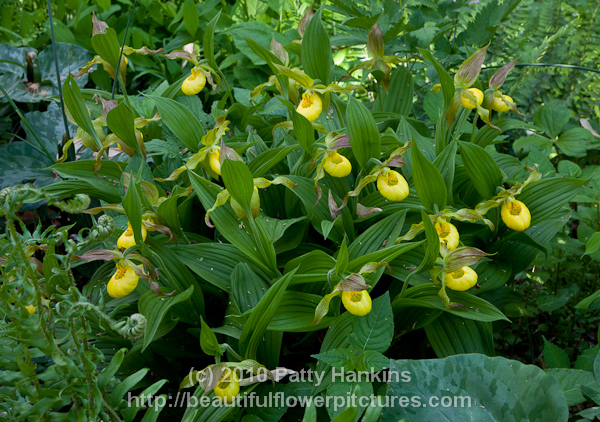
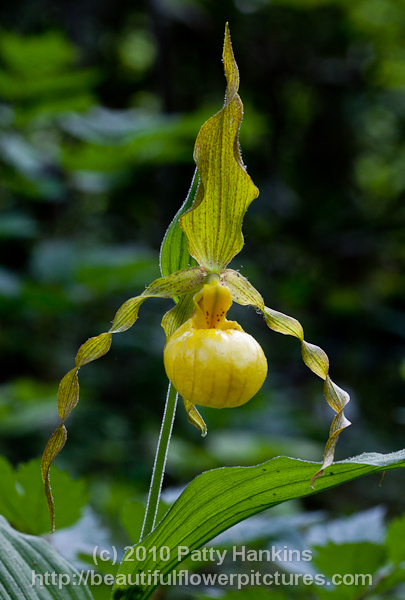
Beautiful photos of my favorite wildflower. Great post and information. I did not know that so many states had them. (I’m from MN) Every spring we would go hunt for them along the roads in the ditches. Often near the “gravel pits” or sand ridges as well as wetter, woodsier locations. The yellow slipper was easy to spot. I will say that over the course of my 52 years we never saw them 2 and half feet tall in the wild, 12 to 15 inches max. The smaller yellow and white variety were even smaller and harder to see, we would usually walk the ditches where we had seen them before. I hope you find them in the wild, these are beautiful, but finding them in a ditch or forest will be so much fun!
What a beautiful set of photos. Cyps are the best native plants in the U.S. And yet they are so fragile and are disappearing due to mankinds interference with their native environment.
Here is a link from Plant Delights Nursery that contains an article on their history, and cultivation:
(www.plantdelights.com/Catalog/Plants/Genus/Cypripedium)